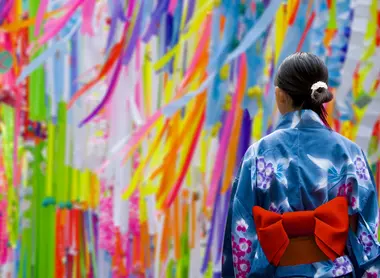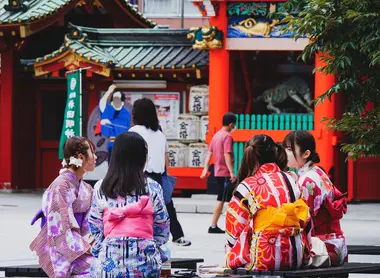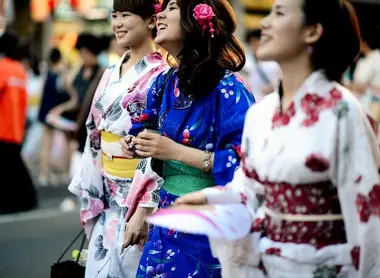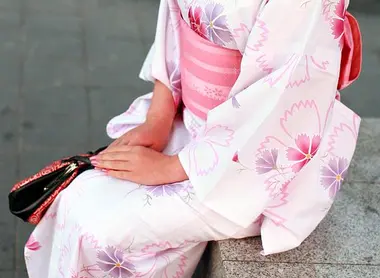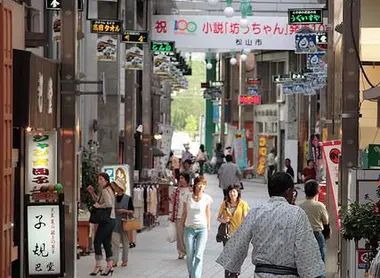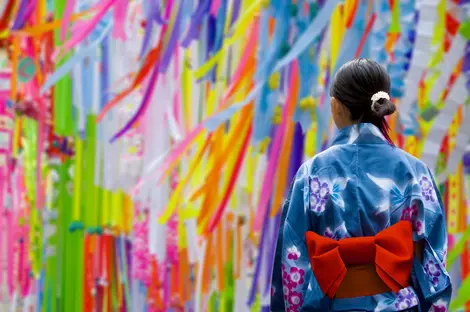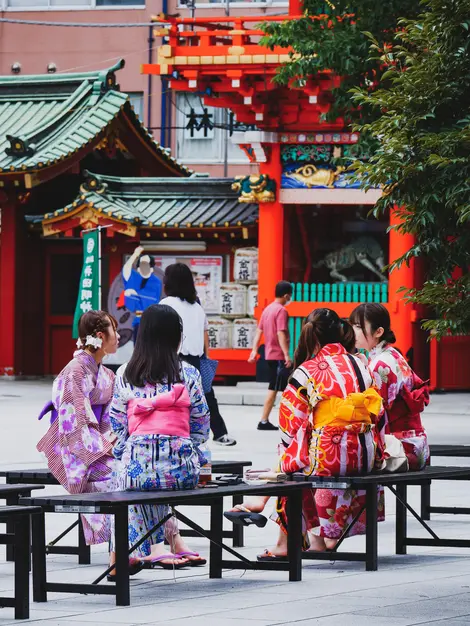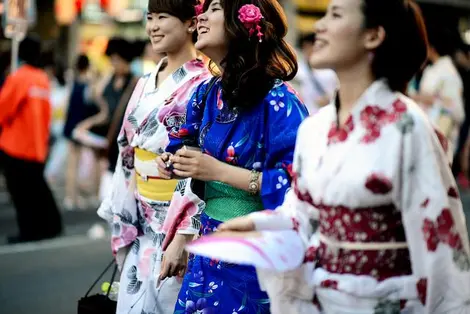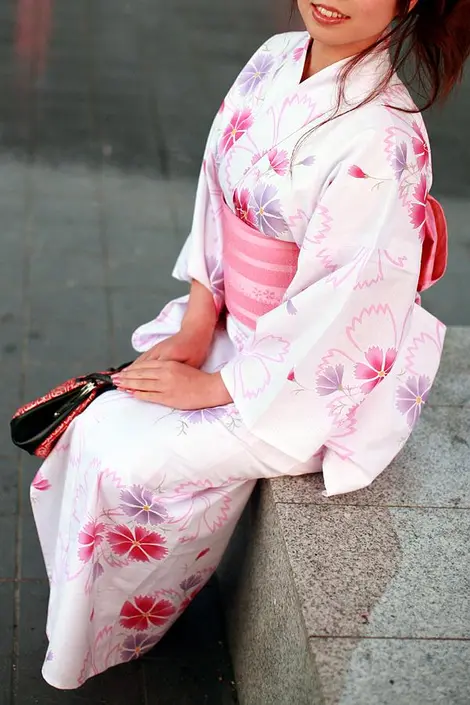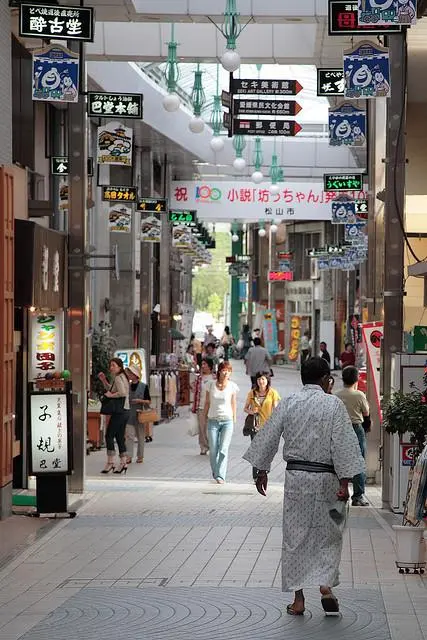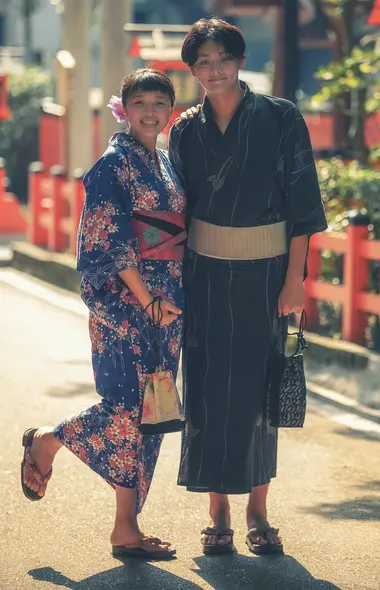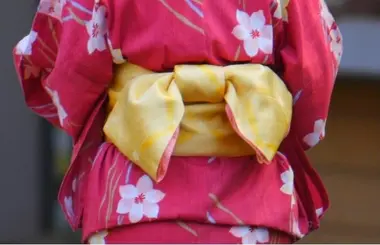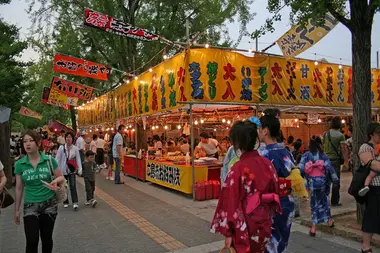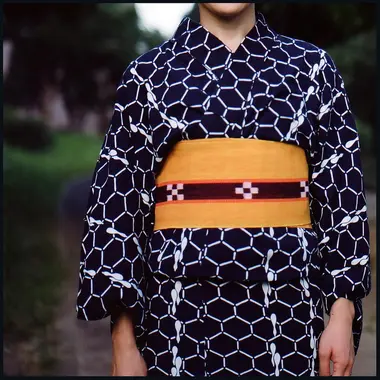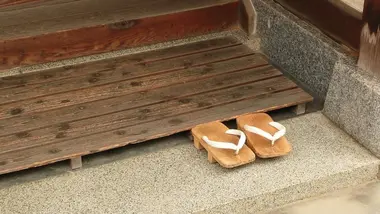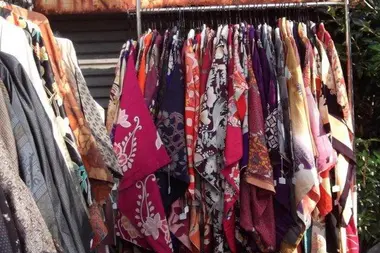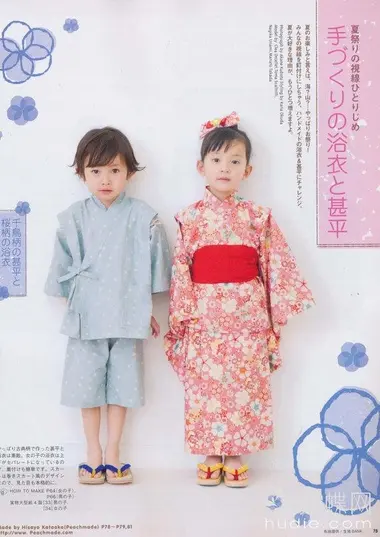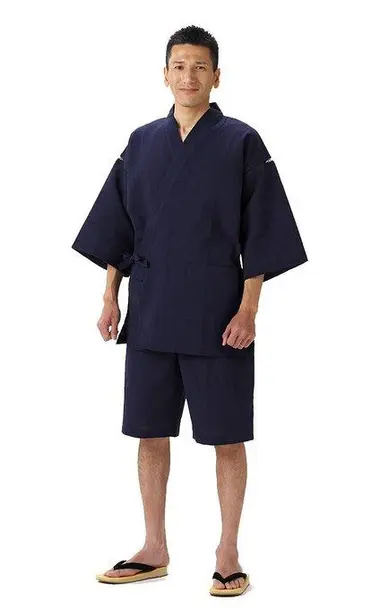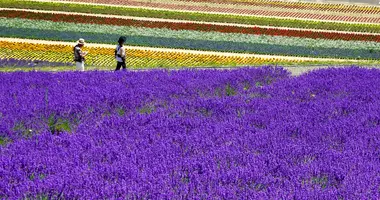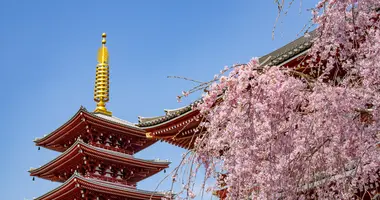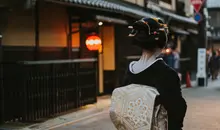Yukata y jinbei: vestirse para el verano 浴衣と甚平
- Publicado el : 30/12/2019
- Por : R.A. /I.D.O.
- Youtube
La yukata, la vestimenta japonesa que debes tener
Desde hace varios años, muchas mujeres japonesas, pero también japoneses, y extranjeros y extranjeras de todo el mundo, se pasean por las ciudades japonesas en verano con yukata. Antes reservado para las fiestas de verano, esta prenda se ha convertido en un "must-have". Aquí tienes todo lo que necesitas saber sobre el yukata y el jinbei.
¿Qué es un yukata?
Yukata se traduce literalmente como "prenda de baño". Efectivamente, el yukata era originalmente un albornoz. Nacido en el periodo Heian (794-1185) y llamado entonces yukatabira, era una bata de algodón o lino que uno se ponía al salir del baño para secarse. Ha mantenido esta función en las posadas tradicionales, en los ryokan e incluso en los hoteles modernos, donde se utiliza como albornoz y como prenda de interior. En las ciudades onsen no es raro ver a los visitantes caminando por las calles con el yukata del hotel. ¡Es aún más común verlo cuando van a desayunar e incluso a cenar! Sin embargo, algunos establecimientos prohíben el uso del yukata en sus restaurantes, recordando a su clientela la función principal de esta prenda ligera y su aspecto algo descuidado.
- Puede interesarte también : El festival del yukata en Himeji
Una versión más sofisticada del yukata original
La otra versión del yukata, hecho de un algodón algo más grueso y con estampados más elaborados, combinado con un obi para las mujeres, se lleva en verano, especialmente durante los festivales y los fuegos artificiales. Más ligero que el kimono tradicional, es también mucho más práctico y menos costoso.
Esta prenda también es más fácil de poner, ya que el pesado y complejo obi (cinturón) de los kimonos deja paso a un obi más ligero, atado con un simple nudo. ¡Algunos obi tienen incluso el nudo ya hecho!
El corte del yukata es similar al del kimono: cinco piezas rectangulares unidas con costuras. Por lo tanto, son los motivos o el tinte los que le dan su originalidad. En la actualidad, la mayoría de estas prendas tienen estampados industriales y están confeccionadas con colores vivos, especialmente los modelos para las chicas jóvenes, que lucen estampados florales o de temporada: ramos de fuegos artificiales, libélulas, peces de colores...
¿Cómo ponerse un yukata?
El yukata se lleva sobre una prenda interior, como una camiseta o un body. Una vez que te hayas puesto el yukata por las mangas, envuelve primero el lado derecho alrededor de tu cadera izquierda, y luego envuelve el lado izquierdo sobre el derecho. Esto es importante: siempre es el lado izquierdo del kimono el que debe cerrarse sobre el derecho (porque los cuerpos de los difuntos se visten con un yukata blanco cuyos lados se cruzan en sentido contrario). Manteniendo el yukata cerrado, envuelve el cinturón alrededor de ti dos o tres veces y haz un nudo. Asegúrate de que los lados están a la altura correcta: la parte inferior de la prenda debe estar a la altura del tobillo y tener la misma longitud en ambos lados.
En el caso de las mujeres, si tienes un obi, colócalo sobre el cinturón, que debe ir atado a la cintura. Los hombres deben atarse el cinturón a la cadera. Pueden llevar el nudo por delante o ponerlo por detrás.
El yukata se suele llevar con geta, sandalias de madera, pero no es raro ver a gente con chanclas. Las jóvenes completan este atuendo con un kinchaku, un bonito bolsito a menudo hecho de mimbre y tela.
¿Dónde encontrar un yukata en Japón?
El yukata se puede encontrar en todos los grandes almacenes y ahora la mayoría de las marcas, como Uniqlo, lanzan sus colecciones. El objetivo es atraer a clientes extranjeros que quieran tener un bonito recuerdo sin pagar el precio de un kimono real, que de todas formas es demasiado difícil de poner. Puede esperar pagar entre 4.000 yenes (unos 32€) y 7.000 yenes (unos 60€) por un bonito yukata.
No dude en buscar en tiendas de ropa de segunda mano (algunas están especializadas en el reciclaje de kimonos, yukata y obi) o en mercadillos.
Dada la popularidad de esta prenda, en muchas ciudades han abierto tiendas de alquiler para esta prends. Puedes alquilar un yukata y todos los accesorios para el día, a veces también para la noche (durante los festivales) y te ayudan a vestirte. Una forma muy agradable de descubrir Japón.
Y para continuar tu aventura japonesa, ¿por qué no alquilar una casa tradicional en la antigua capital imperial de Japón?: alquila una casa en Kioto.
También en Kamakura se pueden alquilar yukatas para visitar la ciudad y sus famosos templos.
El jinbei: la prenda de dos piezas
El jinbei es mucho menos conocido que el yukata. Es una prenda de interior que usan principalmente los hombres hecha de dos piezas de algodón, que también se usa en verano. Esta prenda consiste en un pantalón corto a juego y una chaqueta de manga corta, a veces una chaqueta a juego, un pantalón largo y un pantalón corto, todo ello de algodón o cáñamo.
La chaqueta, que tiene el mismo corte que un kimono, se abrocha en el lateral con dos nudos, uno interior y otro exterior. Las mangas cortas están separadas del resto de la chaqueta por una costura muy suelta que sirve también de ventilación. El jinbei suele ser de un color sobrio, a menudo azul índigo con rayas.
También existen modelos femeninos. El jinbei de las mujeres es más colorido y suele tener dibujos similares a los del yukata.
Es una prenda dedicada a la relajación: se lleva en casa, como prenda de interior o pijama, aunque algunos japoneses la guardan para salir por su barrio o cuando van a un matsuri.
También lo llevan los niños ya que es extremadamente cómodo y agradable de llevar. Hay versiones para bebés que son bonitas y es un ligero regalo perfecto para llevar a casa después de un viaje a Japón..
Las versiones para adultos también pueden usarse como pijamas si decides llevarte algunos a casa en tu equipaje. Podrás encontrarlos en verano en los grandes almacenes o, a veces, en las tiendas de souvenirs japonesas. El precio oscila entre los 2.000 yenes (16€) y los 10.000 (80€) según la calidad.
- No te pierdas: 10 regalos para traer de Japón
